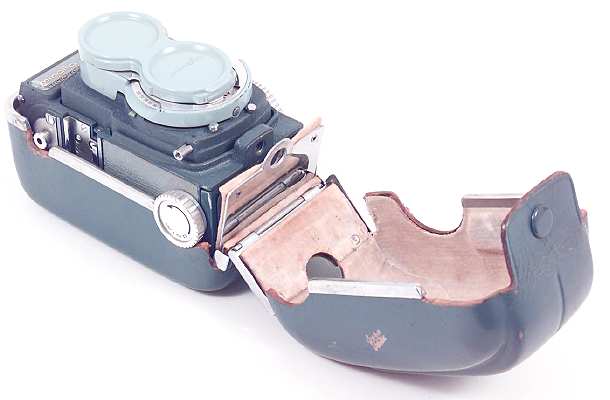
Photographica Pages
An online guide to collectable cameras and related stuff
Minolta Miniflex
The 1950's had seen the rise of the Japanese camera industry,
mostly through sales of 35mm rangefinder and 120 twin lens reflex cameras. The
twin lens reflexes, often referred to as TLRs, where copies of the German Rolleiflex
and Rolleicord designs, some looser than others. Minolta had successfully
marketed a line of Rolleiflex copies, that were of very high quality, and which
had some useful innovations.
In 1957 Franke and Heidecke, the makers of the Rollei line,
introduced a smaller Rolleiflex for 4x4 on 127 film. It was a re-design of a
prewar model, and was well received in the marketplace. Other makers, most notably
Yashica, brought models to market as well. Yashica brought out a line of 127
TLRs in a variety of colors, and they too sold well.
In 1959 Minolta marketed their 4x4 TLR, the Miniflex. It was a
striking design, finished in two toned blue. From a technical standpoint it was
ordinary. It was a knob wind camera, with a knob focus, unlike most of the
postwar models which focused via a lever under the taking lens. The lens is a
60/3.5 Rokkor, the shutter is an Optiper Citizen MVL with speeds from 1 to 1/500
of a second. There is an unusual sports finder which locks into the one of the
two accessory shoes, one on each on the side.
This was the beginning of the end for the twin lens reflex,
and the Miniflex was discontinued before 5000 had been built and sold.
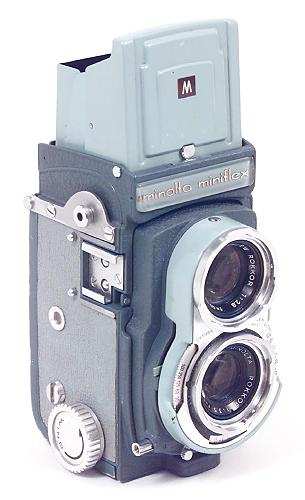
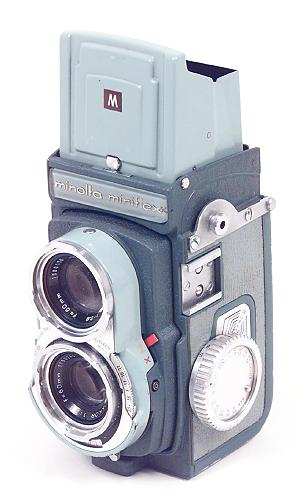
Both sides of the Miniflex
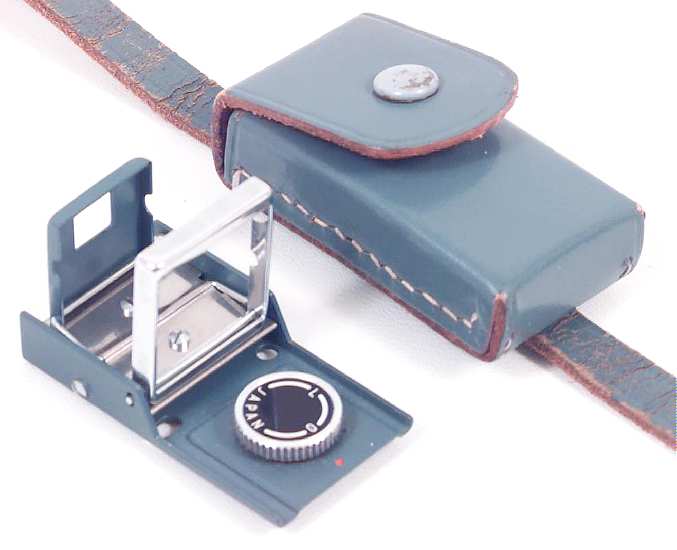
The sportsfinder with it's strap mounted case. The sportsfinder must be removed
before putting the camera in it's case.
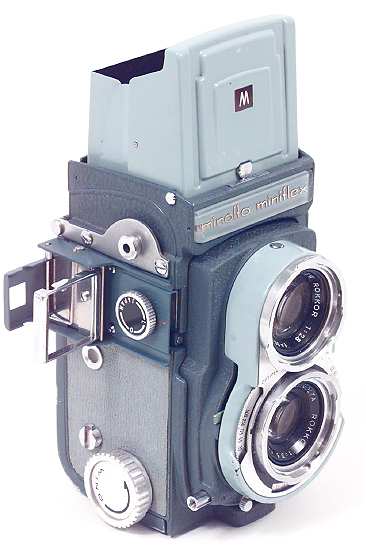
The Miniflex with the sportsfinder attached.
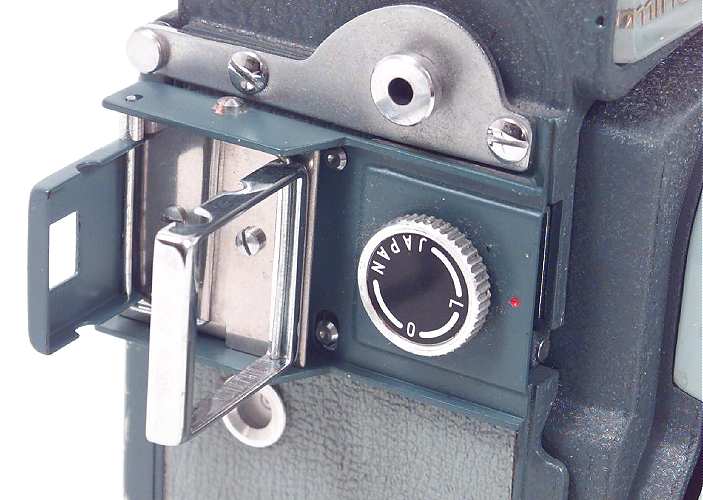
A closer look.
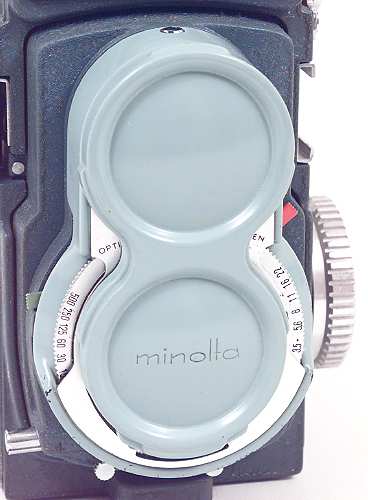
The matching blue finish cap
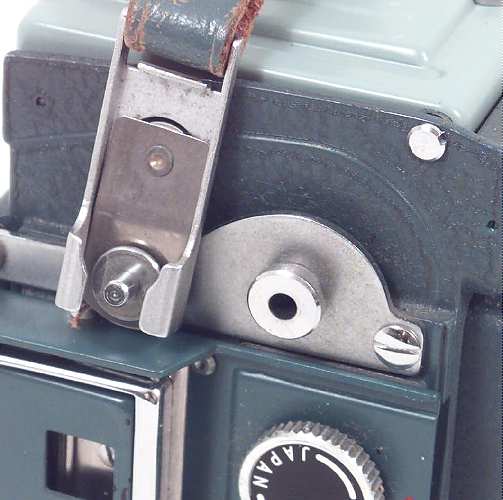
The Miniflex uses a unique type of strap
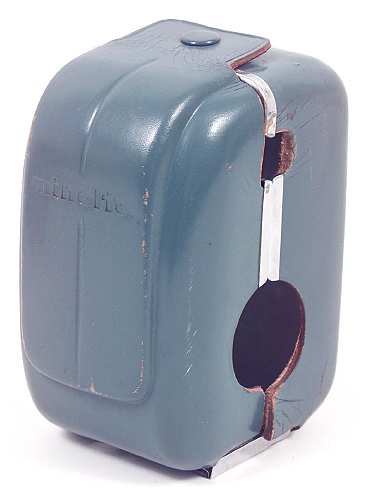
The case for the camera is also distinctive looking
